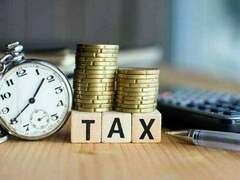SYDNEY: The Australian and New Zealand dollars edged off deep lows on Wednesday as U.S. recession risks hobbled their major competitor, though the prospect of new massive U.S. tariffs on China could make the gains fleeting.
Such was the scale of uncertainty in markets that the kiwi actually got a lift when the Reserve Bank of New Zealand only cut rates by a modest 25 basis points to 3.5%, rather than a half-point easing.
Yet the central bank also left the door wide open to further cuts, saying U.S. President Donald Trump’s tariffs were a significant drag on global growth and that would spill over domestically.
“They sounded increasingly concerned that New Zealand would be caught in the crossfire of the rapidly escalating US-China trade war,” said Abhijit Surya, a senior Asia Pacific economist as Capital Economics.
“We’re sticking to our forecast for a terminal rate of 2.5%.”
Investors are pricing in a near 100% chance the RBNZ would cut by another quarter point in May and take rates to 2.75% or lower by year-end.
The dovish outlook kept the kiwi dollar on the defensive at $0.5540, though it had managed to creep up from an early five-year trough of $0.5483.
Australia, NZ dollars saved by short squeeze, troubles far from over
The Aussie was holding on at $0.5985, having hit a fresh low of $0.5910 at one stage in early trading. There is some support around $0.5900, but no major chart levels until the March 2020 nadir of $0.5510.
The outlook was bleak with China set to face tariffs of 104% from the United States before the end of the day, threatening economic growth in Australia’s biggest export market.
Analysts are hoping Beijing will react with a major stimulus package, which could support demand for Australian resources, but commodity prices overall are being undermined by the prospect of slower growth worldwide.
Markets have reacted by pricing in more rate cuts from the Reserve Bank of Australia, including a real chance it might slash the 4.10% cash rate by an outsized 50 basis points at a meeting on May 18.
“We see interest rates reaching 3.1% at the end of the cutting cycle,” said Diana Mousina, deputy chief economist at fund manager AMP.
“But if the hit to Australian growth and financial markets is larger than expected from US and reciprocal tariffs, we may see a faster and more aggressive cutting cycle this year.”


















Comments